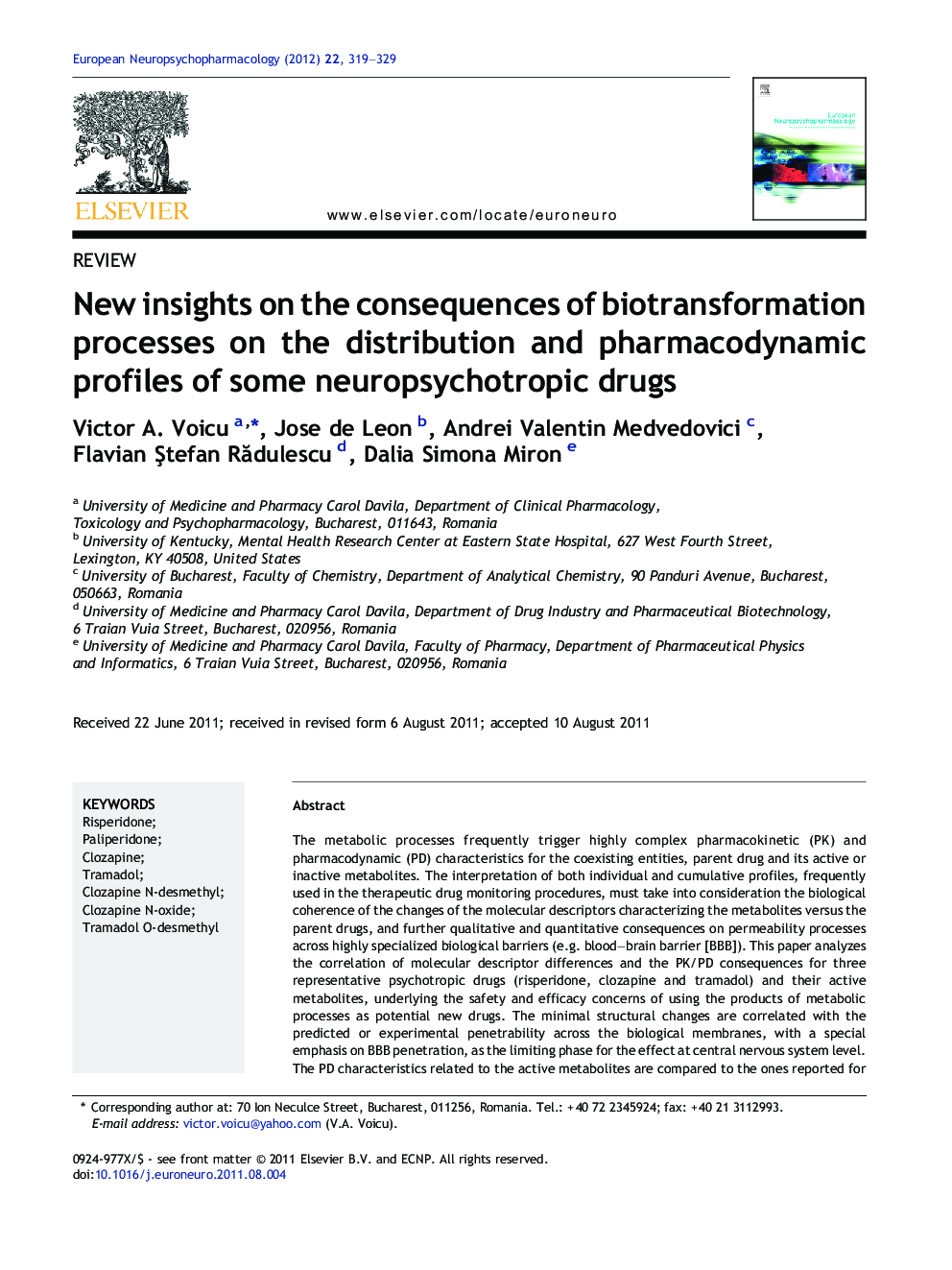| Article ID | Journal | Published Year | Pages | File Type |
|---|---|---|---|---|
| 318912 | European Neuropsychopharmacology | 2012 | 11 Pages |
The metabolic processes frequently trigger highly complex pharmacokinetic (PK) and pharmacodynamic (PD) characteristics for the coexisting entities, parent drug and its active or inactive metabolites. The interpretation of both individual and cumulative profiles, frequently used in the therapeutic drug monitoring procedures, must take into consideration the biological coherence of the changes of the molecular descriptors characterizing the metabolites versus the parent drugs, and further qualitative and quantitative consequences on permeability processes across highly specialized biological barriers (e.g. blood–brain barrier [BBB]). This paper analyzes the correlation of molecular descriptor differences and the PK/PD consequences for three representative psychotropic drugs (risperidone, clozapine and tramadol) and their active metabolites, underlying the safety and efficacy concerns of using the products of metabolic processes as potential new drugs. The minimal structural changes are correlated with the predicted or experimental penetrability across the biological membranes, with a special emphasis on BBB penetration, as the limiting phase for the effect at central nervous system level. The PD characteristics related to the active metabolites are compared to the ones reported for the parent drugs, concerning mainly the affinity for cerebral receptors and the type of activity at a specific level. For the neuropsychotropic substances, with BBB penetrability as a sine qua non condition, the comparative analysis of PK/PD properties for the parent drug and its metabolites generates a complete and highly complex image of the consequences of their coexistence, since these entities must be conceived and analyzed not separately, but by inclusion of usually complementary properties generating a unique therapeutic profile.
